Home
- ▶
- Heaters/Source
- ▶
- Agilent Heaters and SensorsMass Spectrometry, Scientific Supplies & ManufacturingScientific Instrument Services 5973 Source Heater Tamper Resistant Allen Wrench 5973/5975 Quad Sensor 5985 Source Heater Assembly Agilent Interface Heater Assembly 5971 Interface Heater

- ▶
- Reference Material on InstrumentationArticle - A High Temperature Direct Probe for a Mass Spectrometer Design of a Direct Exposure Probe and Controller for use ona Hewlett-Packard 5989 Mass Spectrometer SIS AP1000 AutoProbe™ SIS AP2000 AutoProbe™ - Description of System HPP7: Direct Probe Electronics Console HPP7: Direct Probe for the Agilent (HP) 5973/5975 MSD HPP7: HP Direct Probe Application Notes HPP7: Installation Directions for the Direct Probe HPP7: Side Cover for the HP 5973 MSD HPP7: Support HPP7: Probe Inlet System for the Agilent (HP) 5973 and 5975 MSD with Automatic Indexed Stops HPP7: Theory of Operation of the Direct Probe and Probe Inlet System Direct Thermal Extraction Thermal Desorption Application Notes Environmental Thermal Desorption Application Notes Food Science Thermal Desorption Application Notes Forensic Thermal Desorption Application Notes GC Cryo-Trap Application Notes Headspace Application Notes Purge & Trap Thermal Desorption Application Notes Theory of Operation of the AutoDesorb® System AutoDesorb Notes for SIS Dealers Adsorbent Resin Application Notes Installation of the Short Path Thermal Desorption System on Agilent (HP) and Other GCs Installation of the Short Path Thermal Desorption System on a Varian 3400 GC AutoDesorb® System Development Team Thermal Desorption Applications and Reference Materials Installation of the Short Path Thermal Desorption System - TD5 Part I - Design & Operation of the Short Path ThermalDesorption System Installation Instructions for the Model 951 GC Cryo-Trap on the HP 5890 Series GC Installation Instructions for the Model 961 GC Cryo-Trap on the HP 5890 Series GC Operation of the Model 951/961 GC Cryo-Trap SIS GC Cryo Traps - Theory of Operation NIST/EPA/NIH Mass Spectral Enhancements - 1998 version (NIST98) SIMION 3D Ion Optics Class Mass Spectrometer Source Cleaning Methods MS Tip: Mass Spectrometer Source Cleaning Procedures Mass Spec Source Cleaning Procedures Micro-Mesh® Abrasive Sheets Research Papers Using New Era Syringe Pump Systems EI Positive Ion Spectra for Perfluorokerosene (PFK) Cap Liner Information How do I convert between fluid oz and milliliters? Which bottle material should I choose? Which bottle mouth should I choose? The Bottle Selection Guide CGA Connections for Gas Tanks Chemical Reaction Interface Mass Spectrometry (CRIMS)

- TD
- ▶
- AccessoriesTD Supply Kit Desorption Tubes Adsorbent Resins Desorption Tube Needles Desorption Tube Seals Desorption System Fittings GC Cryo-Trap Extraction Cell TD Sample Loader Prepacked, Conditioned Desorption Tubes Desorption Tube Packing Accessories Stainless Steel Purge Heads Injection Port Liners Tenax TA Poster TD Application Notes Customer Service

- LiteratureApplication Notes Adsorbent Resins Guide Mass Spec Tips SDS Sheets FAQ MS Calibration Compound Spectra Manuals MS Links/Labs/ Organizations MS Online Tools Flyers on Products/Services Scientific Supplies Catalog About Us NextAdvance Bullet Blender® Homogenizer Protocols Micro-Mesh® Literature Instrumentation Literature Agilent GC/MS Literature SIS News / E-Mail Newsletter NIST MS Database - Update Notifications

- ▶
- Thermal Desorption Applications and Reference Materials (This Page)
 Direct Thermal Extraction [apnotes=td_dte]
Direct Thermal Extraction [apnotes=td_dte] Headspace [apnotes=td_headspace]
Headspace [apnotes=td_headspace] Environmental [apnotes=td_environmental]
Environmental [apnotes=td_environmental] Food Science Applications [apnotes=td_food]
Food Science Applications [apnotes=td_food] Pharmaceuticals [apnotes=td_pharm]
Pharmaceuticals [apnotes=td_pharm] Forensic [apnotes=td_forensic]
Forensic [apnotes=td_forensic]
for SIS Short Path Thermal Desorption Systems
Full List of Thermal Desorption Application Notes
Tenax® is a registered trademark of Buchem BV.
 Note 103: EPA Method 325B, Novel Thermal Desorption Instrument Modification to Improve Sensitivity EPA Method 325B, Novel Thermal Desorption Instrument Modification to Improve Sensitivity
Note 103: EPA Method 325B, Novel Thermal Desorption Instrument Modification to Improve Sensitivity EPA Method 325B, Novel Thermal Desorption Instrument Modification to Improve Sensitivity Note 102: Identification of Contaminants in Powdered Beverages by Direct Extraction Thermal Desorption GC/MS Identification of Contaminants in Powdered Beverages by Direct Extraction Thermal Desorption GC/MS
Note 102: Identification of Contaminants in Powdered Beverages by Direct Extraction Thermal Desorption GC/MS Identification of Contaminants in Powdered Beverages by Direct Extraction Thermal Desorption GC/MS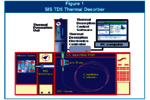 Note 101: Identification of Contaminants in Powdered Foods by Direct Extraction Thermal Desorption GC/MS Identification of Contaminants in Powdered Foods by Direct Extraction Thermal Desorption GC/MS
Note 101: Identification of Contaminants in Powdered Foods by Direct Extraction Thermal Desorption GC/MS Identification of Contaminants in Powdered Foods by Direct Extraction Thermal Desorption GC/MS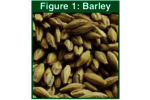 Note 100: Volatile and Semi-Volatile Profile Comparison of Whole Versus Cracked Versus Dry Homogenized Barley Grains by Direct Thermal Extraction Volatile and Semi-Volatile Profile Comparison of Whole vs. Dry Homogenized Wheat, Rye and Barley Grains by Direct Thermal Extraction GC/MS
Note 100: Volatile and Semi-Volatile Profile Comparison of Whole Versus Cracked Versus Dry Homogenized Barley Grains by Direct Thermal Extraction Volatile and Semi-Volatile Profile Comparison of Whole vs. Dry Homogenized Wheat, Rye and Barley Grains by Direct Thermal Extraction GC/MS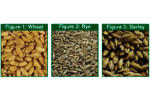 Note 99: Volatile and Semi-Volatile Profile Comparison of Whole vs. Dry Homogenized Wheat, Rye and Barley Grains by Direct Thermal Extraction GC/MS Volatile and Semi-Volatile Profile Comparison of Whole vs. Dry Homogenized Wheat, Rye and Barley Grains by Direct Thermal Extraction GC/MS
Note 99: Volatile and Semi-Volatile Profile Comparison of Whole vs. Dry Homogenized Wheat, Rye and Barley Grains by Direct Thermal Extraction GC/MS Volatile and Semi-Volatile Profile Comparison of Whole vs. Dry Homogenized Wheat, Rye and Barley Grains by Direct Thermal Extraction GC/MS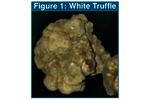 Note 98: Flavor and Aroma Profiles of Truffle Oils by Thermal Desorption GC/MS ASMS 2014 poster on Truffle Oil
Note 98: Flavor and Aroma Profiles of Truffle Oils by Thermal Desorption GC/MS ASMS 2014 poster on Truffle Oil Note 97: Flavor Profiles of Imported and Domestic Beers by Purge & Trap Thermal Desorption GC/MS Ronald E. Shomo, II, Robert Frey, John J. Manura, and Christopher Baker Scientific Instrument Services, Ringoes, NJ (presented at ASMS 2013) Introduction Domestic beer sales were $99 Billion in 2012. 1 This equates to 200,028,520 barrels of product brewed and sold last year. The overall growth from 2011 was 1%, but the fastest growing seg- ment of the beer industry is in regional craft (10,237,632 bbl), brewpubs (870,371 bbl) and microbrewers (1,905,212 bbl) with increased sales of 17% during t...
Note 97: Flavor Profiles of Imported and Domestic Beers by Purge & Trap Thermal Desorption GC/MS Ronald E. Shomo, II, Robert Frey, John J. Manura, and Christopher Baker Scientific Instrument Services, Ringoes, NJ (presented at ASMS 2013) Introduction Domestic beer sales were $99 Billion in 2012. 1 This equates to 200,028,520 barrels of product brewed and sold last year. The overall growth from 2011 was 1%, but the fastest growing seg- ment of the beer industry is in regional craft (10,237,632 bbl), brewpubs (870,371 bbl) and microbrewers (1,905,212 bbl) with increased sales of 17% during t...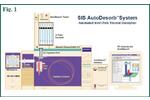 Note 95: Detection of Explosives on Clothing Material by Direct and AirSampling Thermal Desorption GC/MS By Ronald E. Shomo, Robert Frey, and John J. Manura, Scientific Instrument Services, Ringoes, NJ (presented at ASMS2007) Introduction The post 9/11 environment has necessitated the development of better explosive detectors. Virtually all commerce, travelers, and their associated luggage are screened by some method in order to detect explosives, biological or radioactive contamination. Thermal desorption GC/MS is another potential tool in the government's arsenal to identify this type of contrab...
Note 95: Detection of Explosives on Clothing Material by Direct and AirSampling Thermal Desorption GC/MS By Ronald E. Shomo, Robert Frey, and John J. Manura, Scientific Instrument Services, Ringoes, NJ (presented at ASMS2007) Introduction The post 9/11 environment has necessitated the development of better explosive detectors. Virtually all commerce, travelers, and their associated luggage are screened by some method in order to detect explosives, biological or radioactive contamination. Thermal desorption GC/MS is another potential tool in the government's arsenal to identify this type of contrab...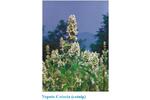 Note 94: Detection of Nepetalactone in the Nepeta Cataria Plant by Thermal Desorption GC/MS Detection of Nepetalactone in the Nepeta Cataria Plant by Thermal Desorption GC/MS
Note 94: Detection of Nepetalactone in the Nepeta Cataria Plant by Thermal Desorption GC/MS Detection of Nepetalactone in the Nepeta Cataria Plant by Thermal Desorption GC/MS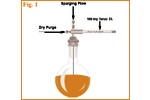 Note 93: Detection of Benzene in Carbonated Beverages with Purge & Trap Thermal Desorption GC/MS Detection of Benzene in Carbonated Beverages with Purge & Trap Thermal Desorption GC/MS
Note 93: Detection of Benzene in Carbonated Beverages with Purge & Trap Thermal Desorption GC/MS Detection of Benzene in Carbonated Beverages with Purge & Trap Thermal Desorption GC/MS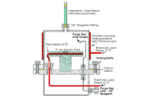 Note 88: Analysis of Silicone Contaminants on Electronic Components by Thermal Desorption GC-MS Analysis of Silicone Contaminants on Electronic Components by Thermal Desorption GC-MS
Note 88: Analysis of Silicone Contaminants on Electronic Components by Thermal Desorption GC-MS Analysis of Silicone Contaminants on Electronic Components by Thermal Desorption GC-MS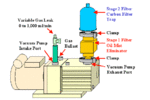 Note 84: Vacuum Pump Exhaust Filters - Charcoal Exhaust Traps Charcoal Exhaust Traps
Note 84: Vacuum Pump Exhaust Filters - Charcoal Exhaust Traps Charcoal Exhaust Traps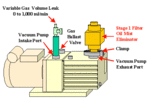 Note 83: Vacuum Pump Exhaust Filters - Oil Mist Eliminators Oil Mist Eliminators
Note 83: Vacuum Pump Exhaust Filters - Oil Mist Eliminators Oil Mist Eliminators Note 82: Vacuum Pump Exhaust Filters Two Stage Pump Filter System
Note 82: Vacuum Pump Exhaust Filters Two Stage Pump Filter System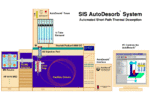 Note 80: Design, Development and Testing of a Microprocessor ControlledAutomated Short Path Thermal Desorption Apparatus Design of the Automated Short path Thermal Desorption System
Note 80: Design, Development and Testing of a Microprocessor ControlledAutomated Short Path Thermal Desorption Apparatus Design of the Automated Short path Thermal Desorption System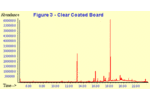 Note 79: Volatile Organic Compounds From Electron Beam Cured and Partially Electron Beam Cured Packaging Using Automated Short Path Thermal Desorption Volatile Organic Compounds From Electron Beam Cured and Partially Electron Beam Cured Packaging Using Automated Short Path Thermal Desorption
Note 79: Volatile Organic Compounds From Electron Beam Cured and Partially Electron Beam Cured Packaging Using Automated Short Path Thermal Desorption Volatile Organic Compounds From Electron Beam Cured and Partially Electron Beam Cured Packaging Using Automated Short Path Thermal Desorption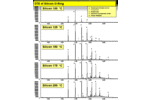 Note 77: The Determination of Volatile Organic Compounds in VacuumSystem Components The Determination of Volatile Organic Compounds in Vacuum System Components
Note 77: The Determination of Volatile Organic Compounds in VacuumSystem Components The Determination of Volatile Organic Compounds in Vacuum System Components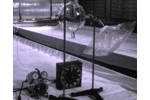 Note 75: An Apparatus for Sampling Volatile Organics From LivePlant Material Using Short Path Thermal Desorption Apparatus for Sampling Volatile Organics from Live Plant Material
Note 75: An Apparatus for Sampling Volatile Organics From LivePlant Material Using Short Path Thermal Desorption Apparatus for Sampling Volatile Organics from Live Plant Material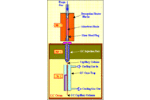 Note 73: The Analysis of Perfumes and their Effect on Indoor Air Pollution Analysis of Perfumes and their effect on Indoor Air
Note 73: The Analysis of Perfumes and their Effect on Indoor Air Pollution Analysis of Perfumes and their effect on Indoor Air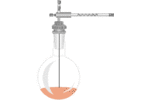 Note 71: Flavor Profile Determination of Rice Samples Using Shor tPath Thermal Desorption GC Methods Flavor Profile of Rice Samples
Note 71: Flavor Profile Determination of Rice Samples Using Shor tPath Thermal Desorption GC Methods Flavor Profile of Rice Samples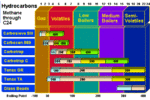 Note 65: Determination of Ethylene by Adsorbent Trapping and Thermal Desorption - Gas Chromatography Determination of Ethylene by Adsorbent Trapping and Thermal Desorption - Gas Chromatography
Note 65: Determination of Ethylene by Adsorbent Trapping and Thermal Desorption - Gas Chromatography Determination of Ethylene by Adsorbent Trapping and Thermal Desorption - Gas Chromatography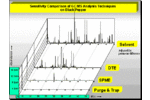 Note 64: Comparison of Various GC/MS Techniques For the Analysis of Black Pepper
Note 64: Comparison of Various GC/MS Techniques For the Analysis of Black Pepper
(Piper Nigrum)Comparison of Various GC/MS Techniques For the Analysis of Black Pepper (Piper Nigrum)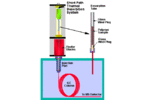 Note 63: Determination of Volatile and Semi-Volatile Organics in Printer Toners Using Thermal Desorption GC Techniques Direct probe Study
Note 63: Determination of Volatile and Semi-Volatile Organics in Printer Toners Using Thermal Desorption GC Techniques Direct probe Study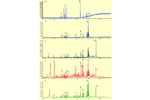 Note 60: Programmable Temperature Ramping of Samples Analyzed ViaDirect Thermal Extraction GC/MS Programmable Temperatre Ramping of Samples analyzed via Direct Thermal Extraction
Note 60: Programmable Temperature Ramping of Samples Analyzed ViaDirect Thermal Extraction GC/MS Programmable Temperatre Ramping of Samples analyzed via Direct Thermal Extraction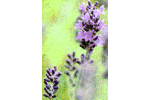 Note 57: Aroma Profiles of Lavandula species SPTD of lavander flowers
Note 57: Aroma Profiles of Lavandula species SPTD of lavander flowers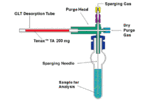 Note 55: Seasonal Variation in Flower Volatiles Thermal Desorption Analysis of Flowers
Note 55: Seasonal Variation in Flower Volatiles Thermal Desorption Analysis of Flowers Note 54: Identification of Volatile Organic Compounds in Office Products Themal Desorption analysis of common office products
Note 54: Identification of Volatile Organic Compounds in Office Products Themal Desorption analysis of common office products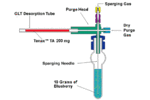 Note 43: Volatile Organic Composition In Blueberries Volatile Organic Composition In Blueberries
Note 43: Volatile Organic Composition In Blueberries Volatile Organic Composition In Blueberries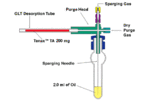 Note 42: The Influence of Pump Oil Purity on Roughing Pumps Note 42: The Influence Of Pump Oil Purity On Roughing Pumps
Note 42: The Influence of Pump Oil Purity on Roughing Pumps Note 42: The Influence Of Pump Oil Purity On Roughing Pumps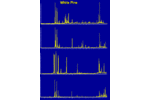 Note 41: Hydrocarbon Production in Pine by Direct Thermal Extraction Hydrocarbon Production In Pine By Direct Thermal Extraction
Note 41: Hydrocarbon Production in Pine by Direct Thermal Extraction Hydrocarbon Production In Pine By Direct Thermal Extraction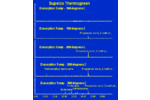 Note 40: Comparison of Septa by Direct Thermal Extraction Comparison Of Septa By Direct Thermal Extraction
Note 40: Comparison of Septa by Direct Thermal Extraction Comparison Of Septa By Direct Thermal Extraction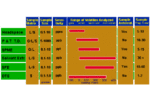 Note 39: Comparison of Sensitivity Of Headspace GC, Purge and Trap Thermal Desorption and Direct Thermal Extraction Techniques For Volatile Organics Comparison of Sensitivity Of Headspace GC, Purge and Trap Thermal Desorption and Direct Thermal Extraction Techniques For Volatile Organics
Note 39: Comparison of Sensitivity Of Headspace GC, Purge and Trap Thermal Desorption and Direct Thermal Extraction Techniques For Volatile Organics Comparison of Sensitivity Of Headspace GC, Purge and Trap Thermal Desorption and Direct Thermal Extraction Techniques For Volatile Organics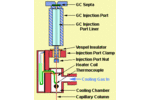 Note 38: A New Micro Cryo-Trap For Trapping Of Volatiles At the Front Of a GC Capillary Column A New Micro Cryo-Trap For Trapping Of Volatiles At the Front Of a GC Capillary Column
Note 38: A New Micro Cryo-Trap For Trapping Of Volatiles At the Front Of a GC Capillary Column A New Micro Cryo-Trap For Trapping Of Volatiles At the Front Of a GC Capillary Column Note 37: Volatile Organic Emissions from Automobile Tires Volatile Organic Emissions From Automobile Tires
Note 37: Volatile Organic Emissions from Automobile Tires Volatile Organic Emissions From Automobile Tires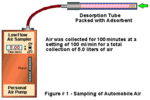 Note 36: Identification Of Volatile Organic Compounds In a New Automobile Identification Of Volatile Organic Compounds In a New Automobile
Note 36: Identification Of Volatile Organic Compounds In a New Automobile Identification Of Volatile Organic Compounds In a New Automobile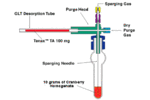 Note 35: Volatile Organics Composition of Cranberries Volatile Organic Composition Of Cranberries
Note 35: Volatile Organics Composition of Cranberries Volatile Organic Composition Of Cranberries Note 34: Selection Of Thermal Desorption and Cryo-Trap Parameters In the Analysis Of Teas Selection Of Thermal Desorption and Cryo-Trap Parameters In the Analysis Of Teas
Note 34: Selection Of Thermal Desorption and Cryo-Trap Parameters In the Analysis Of Teas Selection Of Thermal Desorption and Cryo-Trap Parameters In the Analysis Of Teas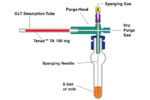 Note 33: Changes in Volatile Organic Composition in Milk Over Time Changes in Volatile Organic Composition in Milk Over Time
Note 33: Changes in Volatile Organic Composition in Milk Over Time Changes in Volatile Organic Composition in Milk Over Time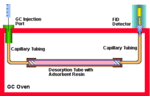 Note 32: Selection and Use of Adsorbent Resins for Purge and Trap Thermal Desorption Applications Selection and Use of Adsorbent Resins for Purge and Trap Thermal Desorption Applications
Note 32: Selection and Use of Adsorbent Resins for Purge and Trap Thermal Desorption Applications Selection and Use of Adsorbent Resins for Purge and Trap Thermal Desorption Applications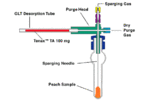 Note 31: Volatile Organic Composition in Several Cultivars of Peaches Volatile Organic Composition in Several Cultivars of Peaches
Note 31: Volatile Organic Composition in Several Cultivars of Peaches Volatile Organic Composition in Several Cultivars of Peaches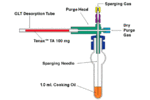 Note 30: Comparison Of Cooking Oils By Direct Thermal Extraction and Purge and Trap GC/MS Comparison Of Cooking Oils By Direct Thermal Extraction and Purge and Trap GC/MS
Note 30: Comparison Of Cooking Oils By Direct Thermal Extraction and Purge and Trap GC/MS Comparison Of Cooking Oils By Direct Thermal Extraction and Purge and Trap GC/MS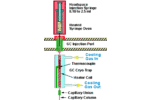 Note 29: Analysis Of Volatile Organics In Oil Base Paints By Automated Headspace Sampling and GC Cryo-Focusing Analysis Of Volatile Organics In Oil Base Paints By Automated Headspace Sampling and GC Cryo-Focusing
Note 29: Analysis Of Volatile Organics In Oil Base Paints By Automated Headspace Sampling and GC Cryo-Focusing Analysis Of Volatile Organics In Oil Base Paints By Automated Headspace Sampling and GC Cryo-Focusing Note 28: Analysis Of Volatile Organics In Latex Paints By Automated Headspace Sampling and GC Cryo-Focusing Analysis Of Volatile Organics In Latex Paints By Automated Headspace Sampling and GC Cryo-Focusing
Note 28: Analysis Of Volatile Organics In Latex Paints By Automated Headspace Sampling and GC Cryo-Focusing Analysis Of Volatile Organics In Latex Paints By Automated Headspace Sampling and GC Cryo-Focusing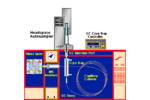 Note 27: Analysis of Volatile Organics In Soils By Automated Headspace GC Analysis of Volatile Organics In Soils By Automated Headspace GC
Note 27: Analysis of Volatile Organics In Soils By Automated Headspace GC Analysis of Volatile Organics In Soils By Automated Headspace GC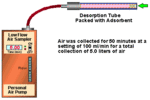 Note 26: Volatile Organics Present in Recycled Air Aboard a Commercial Airliner Volatile Organics Present in Recycled Air Aboard a Commercial Airliner
Note 26: Volatile Organics Present in Recycled Air Aboard a Commercial Airliner Volatile Organics Present in Recycled Air Aboard a Commercial Airliner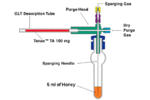 Note 25: Flavor and Aroma in Natural Bee Honey Flavor and Aroma in Natural Bee Honey
Note 25: Flavor and Aroma in Natural Bee Honey Flavor and Aroma in Natural Bee Honey Note 24: Selection of GC Guard Columns For Use With the GC Cryo-Trap Selection of GC Guard Columns For Use With the GC Cryo-Trap
Note 24: Selection of GC Guard Columns For Use With the GC Cryo-Trap Selection of GC Guard Columns For Use With the GC Cryo-Trap Note 23: Frangrance Qualities in Colognes Fragrance Qualities in Colognes
Note 23: Frangrance Qualities in Colognes Fragrance Qualities in Colognes Note 22: Comparison Of Volatile Compounds In Latex Paints Comparison Of Volatile Compounds In Latex Paints
Note 22: Comparison Of Volatile Compounds In Latex Paints Comparison Of Volatile Compounds In Latex Paints Note 21: Detection and Identification Of Volatile and Semi-Volatile Organics In Synthetic Polymers Used In Food and Pharmaceutical Packaging Detection and Identification Of Volatile and Semi-Volatile Organics In Synthetic Polymers Used In Food and Pharmaceutical Packaging
Note 21: Detection and Identification Of Volatile and Semi-Volatile Organics In Synthetic Polymers Used In Food and Pharmaceutical Packaging Detection and Identification Of Volatile and Semi-Volatile Organics In Synthetic Polymers Used In Food and Pharmaceutical Packaging Note 20: Using Direct Thermal Desorption to Assess the Potential Pool of Styrene and 4-Phenylcyclohexene In Latex-Backed Carpets Using Direct Thermal Desorption to Assess the Potential Pool of Styrene and 4-Phenylcyclohexene In Latex-Backed Carpets
Note 20: Using Direct Thermal Desorption to Assess the Potential Pool of Styrene and 4-Phenylcyclohexene In Latex-Backed Carpets Using Direct Thermal Desorption to Assess the Potential Pool of Styrene and 4-Phenylcyclohexene In Latex-Backed Carpets Note 19: A New Programmable Cryo-Cooling/Heating Trap for the Cryo-Focusing of Volatiles and Semi-Volatiles at the Head of GC Capillary Columns Ap Note 19 - Design and Application of the SIS GC Cryo-Trap
Note 19: A New Programmable Cryo-Cooling/Heating Trap for the Cryo-Focusing of Volatiles and Semi-Volatiles at the Head of GC Capillary Columns Ap Note 19 - Design and Application of the SIS GC Cryo-Trap Note 18: Determination of Volatile Organic Compounds In Mushrooms Determination of Volatile Organic Compounds In Mushrooms
Note 18: Determination of Volatile Organic Compounds In Mushrooms Determination of Volatile Organic Compounds In Mushrooms Note 17: Identification of Volatile Organics in Wines Over Time Identification of Volatile Organics In Wines Over Time
Note 17: Identification of Volatile Organics in Wines Over Time Identification of Volatile Organics In Wines Over Time Note 16: Analysis of Indoor Air and Sources of Indoor Air Contamination by Thermal Desorption Analysis of Indoor Air and Sources of Indoor Air Contamination by Thermal Desorption
Note 16: Analysis of Indoor Air and Sources of Indoor Air Contamination by Thermal Desorption Analysis of Indoor Air and Sources of Indoor Air Contamination by Thermal Desorption Note 14: Identification of Volatiles and Semi-Volatiles In Carbonated Colas Identification of Volatiles and Semi-Volatiles In Carbonated Colas
Note 14: Identification of Volatiles and Semi-Volatiles In Carbonated Colas Identification of Volatiles and Semi-Volatiles In Carbonated Colas Note 13: Identification and Quantification of Semi-Volatiles In Soil Using Direct Thermal Desorption Identification and Quantification of Semi-Volatiles in Soil Using Direct Thermal Desorption
Note 13: Identification and Quantification of Semi-Volatiles In Soil Using Direct Thermal Desorption Identification and Quantification of Semi-Volatiles in Soil Using Direct Thermal Desorption Note 12: Identification of the Volatile and Semi-Volatile Organics In Chewing Gums By Direct Thermal Desorption Identification of the Volatile and Semi-Volatile Organics in Chewing Gums by Direct Thermal Desorption
Note 12: Identification of the Volatile and Semi-Volatile Organics In Chewing Gums By Direct Thermal Desorption Identification of the Volatile and Semi-Volatile Organics in Chewing Gums by Direct Thermal Desorption Note 11: Flavor/Fragrance Profiles of Instant and Ground Coffees By Short Path Thermal Desorption Flavor/Fragrance Profiles of Instant and Ground Coffees by Short Path Thermal Desorption
Note 11: Flavor/Fragrance Profiles of Instant and Ground Coffees By Short Path Thermal Desorption Flavor/Fragrance Profiles of Instant and Ground Coffees by Short Path Thermal Desorption Note 10: Quantification of Naphthalene In a Contaminated Pharmaceutical Product By Short Path Thermal Desorption Quantification of Naphthalene in contaminated Pharmaceuticals
Note 10: Quantification of Naphthalene In a Contaminated Pharmaceutical Product By Short Path Thermal Desorption Quantification of Naphthalene in contaminated Pharmaceuticals Note 9: Methodologies For the Quantification Of Purge and Trap Thermal Desorption and Direct Thermal Desorption Analyses Methodologies For the Quantification Of Purge and Trap Thermal Desorption and Direct Thermal Desorption Analyses
Note 9: Methodologies For the Quantification Of Purge and Trap Thermal Desorption and Direct Thermal Desorption Analyses Methodologies For the Quantification Of Purge and Trap Thermal Desorption and Direct Thermal Desorption Analyses Note 8: Detection of Volatile Organic Compounds In Liquids Utilizing the Short Path Thermal Desorption System Detection of Volatile Organic Compounds In Liquids Utilizing the Short Path Thermal Desorption System
Note 8: Detection of Volatile Organic Compounds In Liquids Utilizing the Short Path Thermal Desorption System Detection of Volatile Organic Compounds In Liquids Utilizing the Short Path Thermal Desorption System Note 7: Chemical Residue Analysis of Pharmaceuticals Using The Short Path Thermal Desorption System Short Path Thermal Desorption For Chemical and Pharmaceutical Analysis
Note 7: Chemical Residue Analysis of Pharmaceuticals Using The Short Path Thermal Desorption System Short Path Thermal Desorption For Chemical and Pharmaceutical Analysis Note 6: Direct Thermal Analysis of Plastic Food Wraps Using the Short Path Thermal Desorption System Direct Thermal Analysis of Plastic Food Wraps Using the Short Path Thermal Desorption System
Note 6: Direct Thermal Analysis of Plastic Food Wraps Using the Short Path Thermal Desorption System Direct Thermal Analysis of Plastic Food Wraps Using the Short Path Thermal Desorption System Note 5: Direct Thermal Analysis Using the Short Path Thermal Desorption System Direct Thermal Analysis Using the Short Path Thermal Desorption System
Note 5: Direct Thermal Analysis Using the Short Path Thermal Desorption System Direct Thermal Analysis Using the Short Path Thermal Desorption System Note 4: Direct Analysis of Spices and Coffee Analysis of Spices and Coffee With the Mass Spec
Note 4: Direct Analysis of Spices and Coffee Analysis of Spices and Coffee With the Mass Spec Note 3: Indoor Air Pollution Indoor Air Pollution Analzyed By Mass Spec
Note 3: Indoor Air Pollution Indoor Air Pollution Analzyed By Mass Spec Note 2: Detection of Arson Accelerants Using Dynamic Headspace with Tenax® Cartridges Thermal Desorption and Cryofocusing Detection of Arson Accelerants Using Dynamic Headspace with Tenax® Cartridges Thermal Desorption and Cryofocusing
Note 2: Detection of Arson Accelerants Using Dynamic Headspace with Tenax® Cartridges Thermal Desorption and Cryofocusing Detection of Arson Accelerants Using Dynamic Headspace with Tenax® Cartridges Thermal Desorption and Cryofocusing Note 1: Determination of Off-Odors and Other Volatile Organics In Food Packaging Films By Direct Thermal Analysis-GC-MS Determination of Off Odors in Food Packaging Films
Note 1: Determination of Off-Odors and Other Volatile Organics In Food Packaging Films By Direct Thermal Analysis-GC-MS Determination of Off Odors in Food Packaging Films

